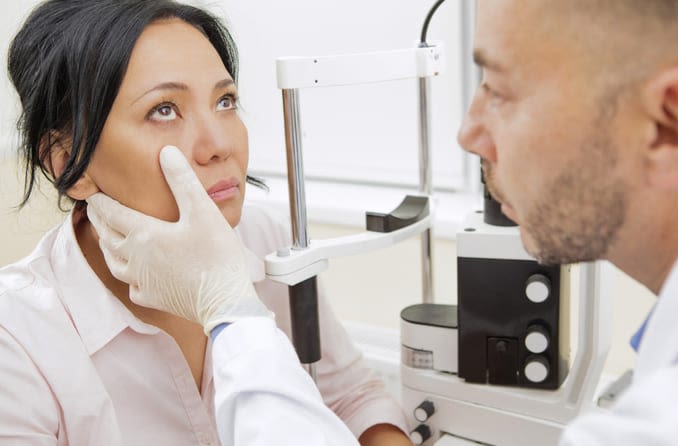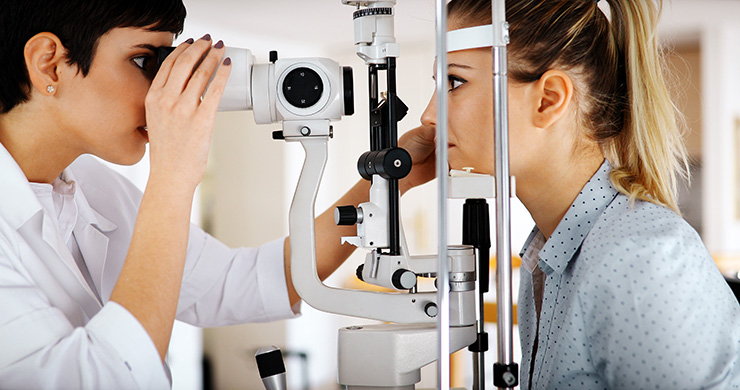Experience Personalized Treatment with Opticore Optometry in Chino
Experience Personalized Treatment with Opticore Optometry in Chino
Blog Article
Exploring the most recent Technological Developments in Optometry and What They Mean for Optometrists
From the accuracy of Optical Comprehensibility Tomography to the nuanced understandings supplied by AI-driven analysis devices, these advancements are establishing new standards in client evaluation and treatment. As these developments penetrate the practice, optometrists are faced with the difficulty of accepting these devices to boost patient results.
Advancements in Diagnostic Tools
Advancing the area of optometry, advancements in diagnostic devices have actually revolutionized the means eye treatment specialists assess and detect aesthetic problems and ocular problems. The previous decade has actually seen significant technical improvements, making it possible for even more precise and comprehensive examinations. Optical Coherence Tomography (OCT), as an example, gives high-resolution cross-sectional pictures of the retina, permitting for the early detection of diseases such as glaucoma and age-related macular deterioration. This non-invasive imaging method has ended up being indispensable in contemporary optometric technique.
One more key innovation is the intro of advanced corneal topography systems, which map the surface curvature of the cornea with accuracy. These tools are especially valuable for fitting call lenses and detecting corneal conditions. Additionally, electronic retinal imaging has actually changed typical ophthalmoscopy, using detailed, breathtaking sights of the retina that facilitate complete aesthetic assessments.
The development of wavefront aberrometry has likewise been vital, enabling the evaluation of refractive errors with unrivaled accuracy (Eye Doctor Optometrist). This modern technology helps in personalizing corrective lenses and enhancing medical results for refractive surgical procedures. Jointly, these analysis innovations equip optometrists to deliver remarkable person treatment, making sure early intervention and customized therapy techniques, inevitably enhancing visual wellness outcomes
AI in Individual Management
Building on the foundation of sophisticated diagnostic devices, the consolidation of expert system (AI) in person monitoring stands for a transformative leap for optometry. AI systems are significantly utilized to enhance efficiency, accuracy, and customization in client care. By assessing substantial quantities of data, AI can identify patterns and predict potential eye problems, making it possible for eye doctors to tailor treatments better. This ability is vital in taking care of chronic eye diseases such as glaucoma and diabetic person retinopathy, where early detection and constant monitoring are vital.
Additionally, AI-driven systems help with structured patient communications and administrative processes. Automated organizing, virtual examinations, and personalized follow-up plans not only boost patient contentment however additionally enhance time management for experts. These systems can triage patients based upon the urgency of their conditions, making sure that those in crucial requirement obtain prompt interest.
In addition, AI enhances decision-making by offering eye doctors with evidence-based referrals and treatment pathways. By integrating information from digital health documents, AI tools offer insights that educate professional decisions, minimizing the risk of errors and enhancing individual end results. As AI continues to evolve, its role in client administration will likely increase, improving the landscape of optometric treatment.
Advances in Retinal Imaging
In the realm of optometry, retinal imaging has seen amazing technical innovations that are improving analysis capabilities and client care. Advancements such as Optical Comprehensibility Tomography (OCT) and fundus photography have transformed how optometrists visualize and analyze the retina. OCT, specifically, offers high-resolution, cross-sectional photos of the retina, allowing for the detailed exam of its layers. This capacity is very useful for very early detection and monitoring of problems like glaucoma, diabetic retinopathy, and age-related macular deterioration.
Improved imaging modalities like OCT important source angiography are further refining diagnostic accuracy. Eye Doctor Optometrist. Such improvements help with the identification of min retinal modifications that might represent condition development.
Additionally, innovations in synthetic knowledge are boosting retinal imaging by enabling automatic evaluation of huge datasets. These systems assist optometrists in identifying patterns a sign of pathology, consequently boosting analysis accuracy and effectiveness. Jointly, these technologies are changing retinal imaging right into a foundation of modern eye care, enhancing end results and broadening healing opportunities.
Teleoptometry's Expanding Duty
Teleoptometry is progressively ending up being a crucial element of eye care, driven by developments in digital communication and analysis tools. This is particularly advantageous in rural and underserved locations where access to specialized eye care is often minimal.
The assimilation of expert system (AI) more boosts teleoptometry, making it possible for the evaluation of aesthetic information and assisting in the detection of eye problems such as glaucoma and diabetic retinopathy. AI-powered algorithms can rapidly analyze complicated imaging data, supplying eye doctors with important insights that strengthen medical decision-making.
Additionally, teleoptometry sustains connection of treatment with smooth combination with digital health and wellness documents (EHRs), allowing eye doctors to keep extensive patient histories. When consulting with different experts., this makes sure that people receive individualized and consistent treatment also.
In spite of these advantages, obstacles stay, including making certain information safety and managing patient assumptions. Teleoptometry stands for a substantial stride towards more available, effective, and patient-centered eye care. As technology evolves, its duty is poised to increase further.

Future Fads in Eye Care
A myriad of innovative patterns is set to improve the future of eye care, driven by technical developments and the advancing demands of people. One substantial pattern is the assimilation of expert system (AI) in diagnostics, which guarantees from this source to boost the accuracy and effectiveness of eye evaluations. AI algorithms can analyze substantial quantities of data from retinal images, potentially finding problems like diabetic retinopathy and glaucoma earlier than traditional approaches.
In addition, tailored medication is gaining grip in optometry, with hereditary screening notifying personalized therapy strategies. This approach intends to enhance patient end results by tailoring treatments to private genetic accounts. Wearable technology, such as clever get in touch with lenses, is also coming up, providing real-time monitoring of intraocular stress or sugar levels, hence supplying continuous insights right into systemic and ocular health and wellness.
The fostering of enhanced reality Check Out Your URL (AR) and digital reality (VIRTUAL REALITY) in training and client education and learning is another arising fad. These modern technologies provide immersive experiences that can boost understanding and skills both for patients and eye doctors. As these trends advance, optometrists must stay abreast of technical improvements to provide sophisticated treatment, guaranteeing better patient results and satisfaction in the dynamic landscape of eye treatment.
Verdict

Jointly, these diagnostic advancements encourage optometrists to supply superior patient care, ensuring early treatment and tailored treatment approaches, inevitably improving visual health and wellness outcomes.

As these modern technologies continue to advance, optometrists have to adapt and integrate them right into method, inevitably optimizing process performance and elevating the requirement of eye care provided to individuals.
Report this page